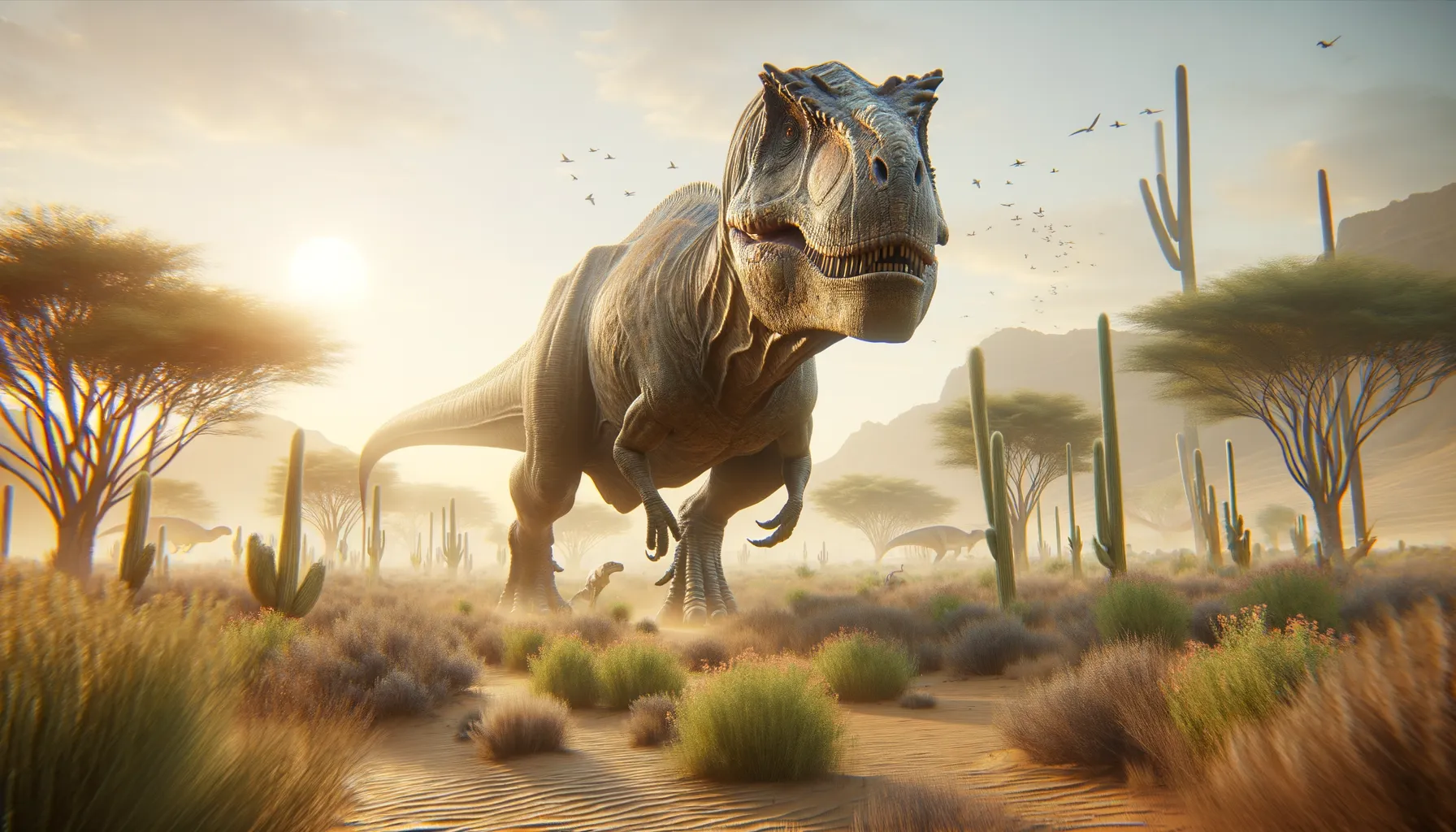
Pachysaurops
The thick-skulled wanderer of ages past.
Period
Cretaceous
Length
Measured about 8 to 9 meters long.
Height
Stood approximately 3 meters tall at the hip.
Weight
Estimated to weigh around 1.5 to 2 tons.
Pachysaurops was a remarkable dinosaur known for its thick-skulled appearance and formidable size. Living during the Cretaceous period, it thrived in diverse environments, adapting to changes with ease. Its distinctive domed skull has intrigued paleontologists for decades. As a herbivorous creature, Pachysaurops had a strong build to support its hefty frame and powerful limbs. Fossil records indicate that it traveled in herds, possibly for protection and efficient foraging, making it a fascinating subject of study.
Diet
Pachysaurops was primarily herbivorous, feeding on a wide range of vegetation such as ferns, cycads, and flowering plants. Its strong jaws and teeth were well-suited for breaking down tough plant material.
Hunting
Although a herbivore, Pachysaurops had to be knowledgeable about the predatory dinosaurs in its ecosystem. It likely relied on its size and speed to evade potential threats rather than participating in any active hunting.
Environmental challenges
Pachysaurops faced environmental challenges such as climate shifts and volcanic activity that altered its habitat. The fluctuations in plant availability required adaptability in its diet. Additionally, encounters with predators meant it needed strategies to protect itself and its herd. Seasonal changes also influenced migratory patterns to ensure access to food and water.
Speed
Pachysaurops could reach moderate speeds when necessary.
Lifespan
It likely lived for several decades.
First discovery
Discovered in the late 20th century in North America.
Fun Facts
- Pachysaurops was a small dinosaur that lived during the late Jurassic period, about 150 million years ago.
- This dinosaur's name means 'thick reptile face' due to its distinguishing feature of having a thickened skull roof.
- Pachysaurops was an herbivore, feeding mainly on low-lying plants and vegetation.
- It walked on two legs, but it was believed to have had the ability to walk on all fours as well.
- Paleontologists think that Pachysaurops used its thick skull in head-butting contests with other members of its species.
- Despite looking fierce, Pachysaurops was relatively small, about the size of a large dog.
- The fossils of Pachysaurops were first discovered in what is now present-day China.
Growth and Development
Pachysaurops hatched from eggs and initially would have been small and vulnerable, growing rapidly in its early years. It lived in herds where young ones were possibly protected by the adults. Its growth involved gradual thickening of its iconic skull, a feature that developed fully by adulthood.
Habitat
Pachysaurops inhabited lush forested areas and open plains, where it could find abundant plant life. The presence of rivers and waterways was crucial for its hydration and food supply. It adapted well to a wide range of terrains, from temperate woodlands to more arid regions.
Interaction with other species
Pachysaurops coexisted with various dinosaur species, ranging from fellow herbivores to fearsome carnivores. Its herd behavior likely minimized conflicts with predators. Interactions included possible competition with other herbivores for food resources, influencing its migration patterns.
Natural lifespan
Pachysaurops could naturally live up to 50 years.
Reproduction
Reproduction involved laying clutches of eggs in carefully selected safe locations. The nesting sites were possibly monitored by adults to ensure hatchling safety. Young Pachysaurops may have stayed close to the herd for protection until they matured.
Social behaviour
As a social creature, Pachysaurops moved in organized groups, providing safety in numbers. This herd behavior facilitated communication and coordination, crucial for migration and foraging. Social hierarchies within the group may have existed, especially during mating seasons.
Fossil locations
Fossils of Pachysaurops have been predominantly found in North America, with significant discoveries in areas such as Montana and Alberta. These findings have offered insights into its distribution patterns during the Cretaceous period. Fossilized nests and eggs have been occasionally unearthed, shedding light on its reproductive strategies.
